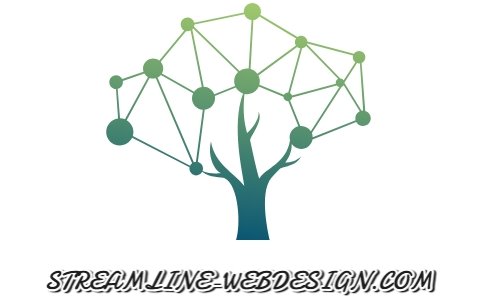
In the pursuit of accessibility, the journey is as important as the destination. While organizations often focus on immediate fixes and compliance, true accessibility involves a broader, more holistic approach that adapts to an ever-changing landscape. It requires not only technical solutions but also a shift in mindset, processes, and team dynamics.
Accessibility is not a one-size-fits-all challenge, and what works for one team or organization may not work for another. The key lies in finding what fits your specific context, while remaining agile enough to evolve as needs shift. While much of the conversation around accessibility revolves around tools and technologies, there are numerous other dimensions to consider—each contributing to a truly inclusive culture.
The Building Blocks of an Inclusive Strategy
Accessibility is not a box to check but a fundamental principle to embed throughout your organization. To truly champion accessibility, you need to recognize the various areas where change is needed. Here are a few critical components that, when approached thoughtfully, can create a more inclusive environment:
1. Measuring Accessibility Progress
One of the first steps to fostering an inclusive culture is tracking progress. Collecting accessibility metrics allows teams to quantify their efforts and understand where improvement is necessary. Metrics can range from simple compliance checks to more sophisticated insights, such as user feedback or engagement data from users with disabilities. By establishing clear benchmarks, teams can make informed decisions about where to allocate resources and focus their efforts.
2. User Research and Testing
Accessibility goes beyond just meeting compliance standards; it’s about creating products that work for everyone. This is where user research and testing come into play. Engaging users with disabilities in testing helps uncover real-world barriers that may not be obvious to non-disabled users. By involving these users early in the design process, you can identify potential problems before they become costly fixes. Inclusive testing also helps shift the mindset from “fixing” accessibility to creating products that work seamlessly for all users.
3. Accessible Content and Communications
Content accessibility is another crucial aspect of inclusive design. This goes beyond text and images—ensuring that videos are captioned, documents are screen reader-friendly, and content is easy to navigate and understand is key. Communication strategies should also be accessible, whether it’s customer service, training materials, or internal communications. Without accessible content, your efforts in other areas may fall short.
4. Accessible Hiring and Workplace Practices
One often overlooked element in the conversation about accessibility is the workplace itself. Ensuring that your hiring practices are inclusive and that workplace tools and platforms are accessible to everyone is crucial. This includes using accessible recruiting platforms, offering accommodations for interviews, and providing the necessary tools for employees with disabilities to do their best work. Creating an environment where everyone can succeed isn’t just about providing accessible tools—it’s about fostering an inclusive culture that values diversity at every level.
The Diversity Challenge: A Barrier to Progress
However, one of the most significant barriers to creating an inclusive culture is the lack of diversity in the workforce, particularly the underrepresentation of people with disabilities in tech roles. This gap not only limits the perspectives that inform product development but also perpetuates the cycle of exclusion. When people with disabilities aren’t part of the teams designing products, those products are less likely to meet their needs. Worse still, disabled individuals often face challenges in the hiring process itself. From inaccessible application forms to lack of accommodations during interviews, these systemic issues can make it harder for qualified candidates to even get their foot in the door.
This lack of representation is a barrier not only to accessibility in products but to accessibility in the workplace itself. Even once hired, individuals with disabilities often encounter barriers in using workplace tools and platforms that are not designed with accessibility in mind. These tools, which are meant to facilitate productivity, can become obstacles, undermining the potential of a diverse workforce.
In addressing this, organizations should strive for a more inclusive hiring process that goes beyond compliance to actively engage disabled candidates. This could mean ensuring that job listings are accessible, offering flexible interview formats, or providing assistive technologies that level the playing field for all applicants. When the workforce itself reflects the diversity of the user base, solutions to accessibility challenges become more intuitive, effective, and sustainable.
The Key to Progress: Flexibility and Adaptation
Creating an inclusive culture is not a one-time initiative; it’s a continuous, adaptive process. As technology evolves, so too do the needs and expectations of users with disabilities. What works today may not work tomorrow, and so it’s vital to remain flexible and open to new approaches. By prioritizing areas of action while staying attuned to the needs of your users and employees, you can make informed decisions that have a lasting impact.
In the long run, success lies in balancing multiple priorities—such as accessibility metrics, user testing, and workplace inclusion—while being agile enough to adapt to new challenges. Too often, organizations stretch themselves too thin by trying to address everything at once. This can lead to burnout, ineffective solutions, and a lack of focus. By narrowing your focus and approaching each area strategically, you can make meaningful, lasting change.
Conclusion: Embracing Accessibility as a Cultural Shift
Ultimately, true accessibility is not just about compliance or meeting standards; it’s about creating an environment where everyone—regardless of ability—can thrive. Achieving this requires a comprehensive, adaptive strategy that includes user research, accessible content, inclusive hiring practices, and more. But perhaps most importantly, it requires a shift in mindset. Accessibility is not a one-time fix but an ongoing commitment to building products, teams, and cultures that are inclusive by design.
By fostering an environment that actively supports accessibility across every facet of your organization, you can not only create better products but also contribute to a more inclusive digital landscape. The key is to identify your areas of action, prioritize strategically, and stay flexible as you move forward. After all, when accessibility is woven into the fabric of your organization, everyone benefits.











